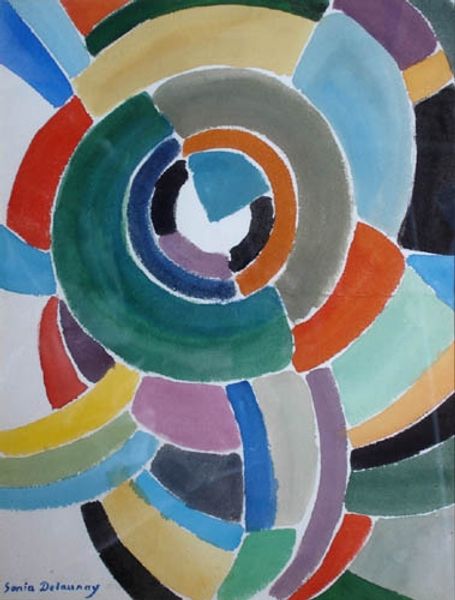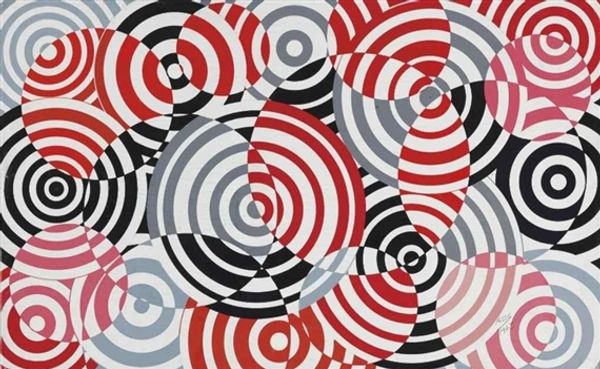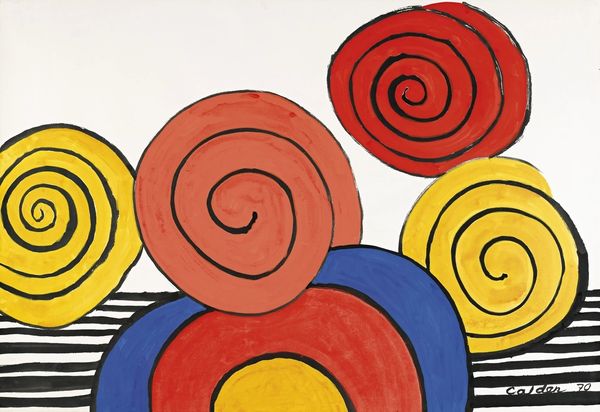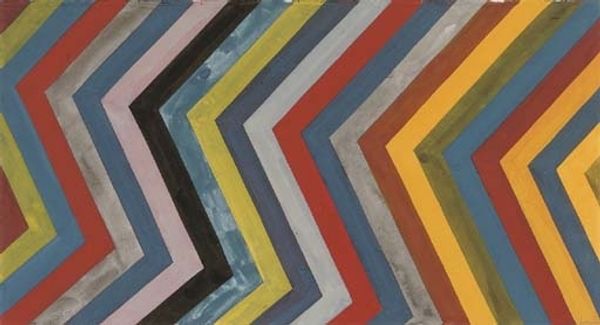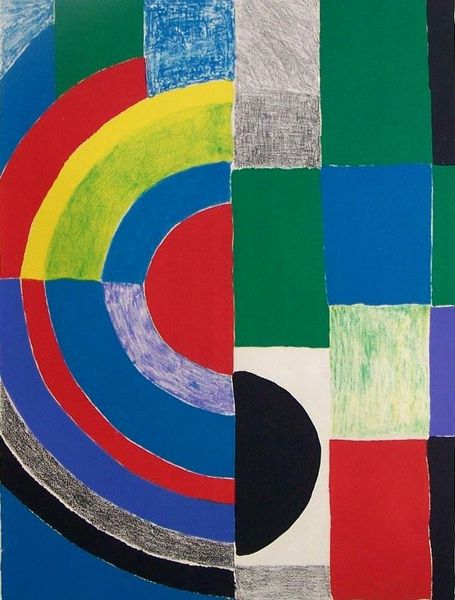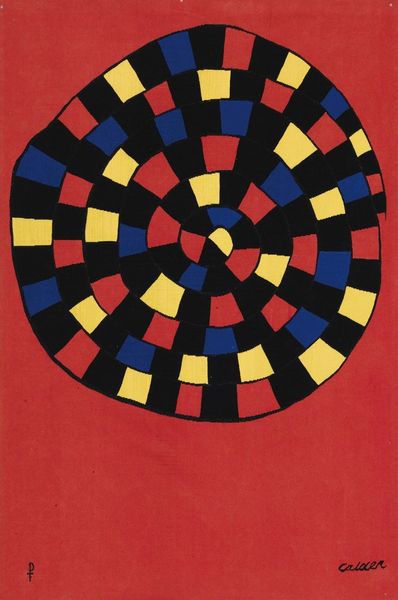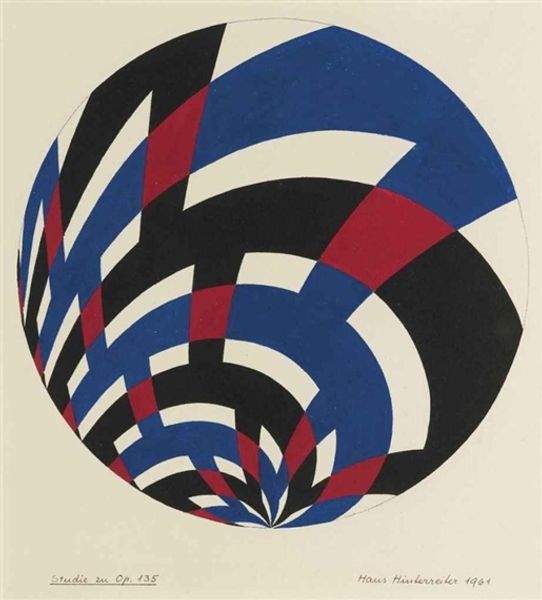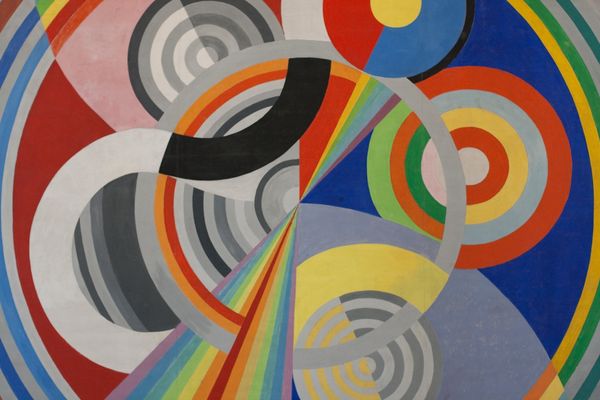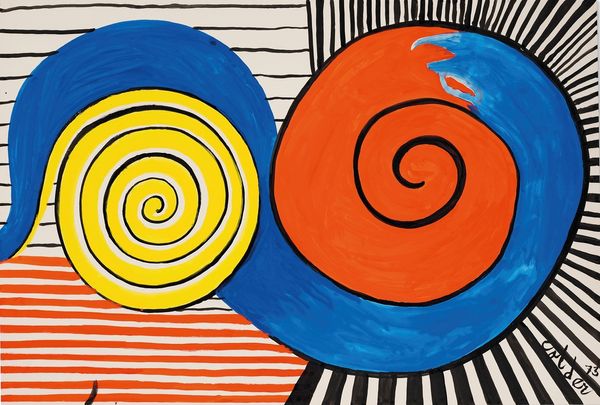
painting, oil-paint, acrylic-paint
#
op-art
#
painting
#
oil-paint
#
op art
#
colour-field-painting
#
acrylic-paint
#
geometric pattern
#
abstract pattern
#
geometric
#
geometric-abstraction
#
abstraction
#
line
#
concentric circle
Copyright: Alexander Calder,Fair Use
Curator: Oh, look at that! It feels like falling down a rabbit hole of primary colours. A very orderly, deliberate rabbit hole, mind you. Editor: It’s "Spiral," painted by Alexander Calder in 1970. And yes, there’s a playful precision in the arrangement. I find it interesting to consider how his earlier mobiles and wire sculptures perhaps informed the rhythm and geometry we see in this flat work. Curator: Mobiles informing flatness… That's delightful. Though you know, what truly gets me are the imperfections, the wobble in the line, the slight bleeding of the paint. It’s handmade, and joyfully so. It refuses to be clinically perfect, like so many other Op Art works I’ve seen that use machine-like silkscreening to reach razor-sharp effects. Editor: Exactly! And I wonder about the labour of its production. Was this piece commercially commissioned, or born from personal exploration? What kind of paint was he using—acrylic or oil, and how would this change how it was handled and circulated through his workshops? Considering the timing, this piece was produced at the peak of commercial Pop Art printing ventures. It reminds us that his more handcrafted works would have circulated in a completely different set of circuits. Curator: Hmm, food for thought... for now, it seems almost mischievous. There's a hint of playfulness beneath that structured surface. All those primary and secondary hues doing a neat little dance, drawing the eye relentlessly inwards. Editor: And I'm intrigued how he translates that dynamic movement of a spiral using, at closer look, solid rectangular blocks! The tensions between precision and play, calculation and spontaneity—all manifested in the paint itself. And the edges seem somewhat hastily marked in white – very gestural. Curator: Maybe Calder understood that sometimes the greatest trick an artist can pull is revealing the machinery behind the magic? Makes it all the more… human. Editor: Absolutely. An ode to his own artistic practice as a material investigation, in many ways.
Comments
No comments
Be the first to comment and join the conversation on the ultimate creative platform.

